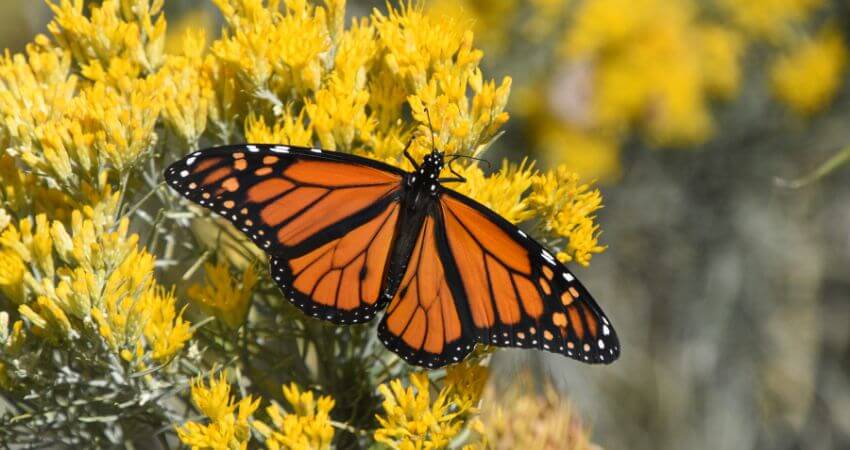This year, while much of North America prepares for a winter of ice and snow, an estimated 250,000,000 Monarch Butterflies will begin their annual journey to Michoacan, Mexico for what many consider to be one of nature’s most spectacular phenomenon.
Each year, the brightly colored orange and black Monarchs travel distances as great as 3,100 miles to avoid the North’s freezing cold temperatures. Originating in Canada and the U.S., the Monarch begins its month-long trip in late October or early November, flying approximately 70 miles per day (with a wing span of only four inches!). Those fortunate enough to live along this route are frequently exposed to this impressive site as they behold large groups of butterflies flying overhead en route to Central Mexico’s mountaintop pine forests.
Their final destination lies in the eastern mountains surrounding Morelia, Michoacan’s capital, a charming colonial city at the center of several sites, such as Lake Patzcuaro, Janitzio and Tzintzuntzan. Here in the Oyamel fir forests, the Monarch spends its winter waiting for spring awaiting mating season. When early springtime finally arrives, the butterflies mate then return north, laying eggs along the way.
If you plan on visiting Mexico to escape freezing temperatures, make sure to take time to witness this incredible site. The best time to go is first thing in the morning while the butterflies are still in the trees. There are two reserves open to the public:
Santuario de Mariposas El Rosario (“El Rosario Monarch Butterfly Sanctuary”) – This is the larger of the two sanctuaries and it is open to the public in the Monarch Butterfly Biosphere Reserve in the mountains about three hours west of Mexico City. The Monarchs cluster together by the thousands in the pinetrees, often weighing down branches with their sheer mass. Ordinarily green pine trees glow orange from the multitude of the Monarch’s orange wings.
Another reserve open to the public is the Sierra Chincua Monarch Butterfly Sanctuary – which is a short distance from the small mountain town of Angangueo. Sierra Chincua offers guided horseback riding tours, as trails tend to be a little rough. Angangueo and nearby towns such as Ocampo, Zitacuaro and Maravatio celebrate the Monarch Butterfly in February with the Festival de la Mariposa Monarca with typical dances, music and craft markets.
Although the Monarch is not an endangered species, the Mexican government has taken several actions to protect the butterfly. In 1986, the Mexican government created a reservation to preserve the Monarch’s essential habitat. This reservation covers five of the 13 known sites in Michoacan where the butterflies spend their winter. In addition, Mexico’s government has established the Michoacan Reforestation Fund to set aside money to replant trees in the forest.
The Mexico Tourism Board, or Consejo de Promocion Turistica in Spanish, is an executive agency of Mexico’s Ministry of Tourism with autonomous management and the broad participation of the private sector. Its main function is promoting worldwide tourism to Mexico.










